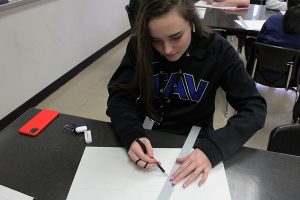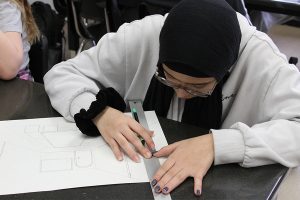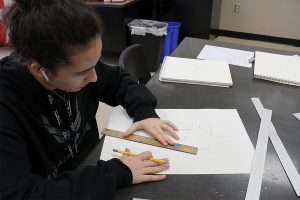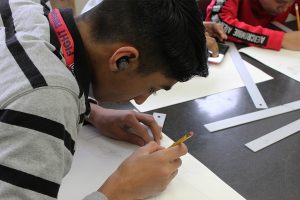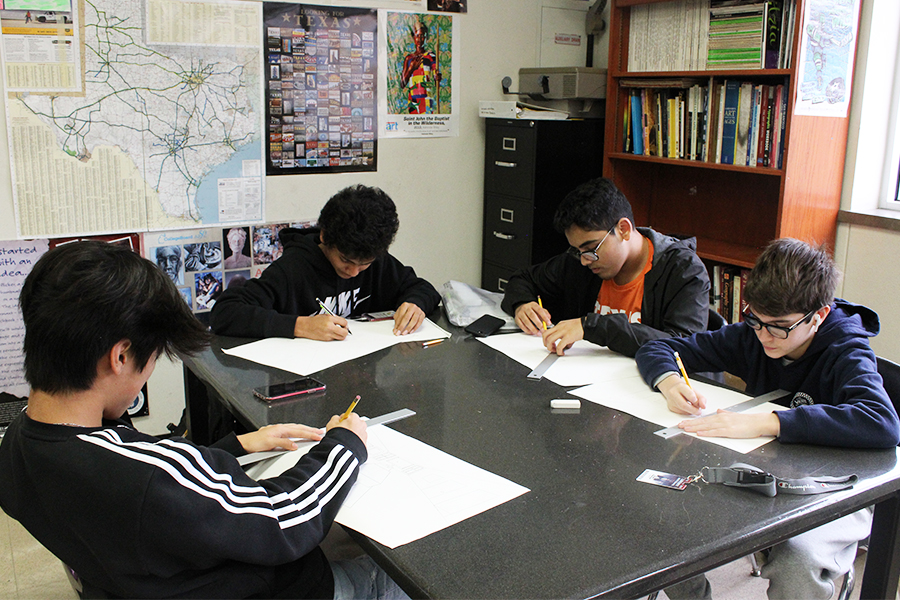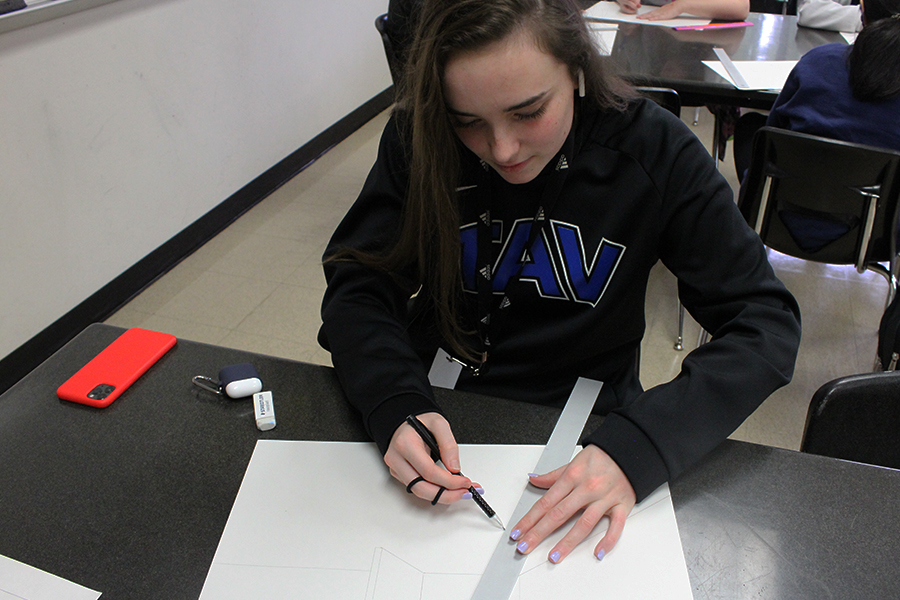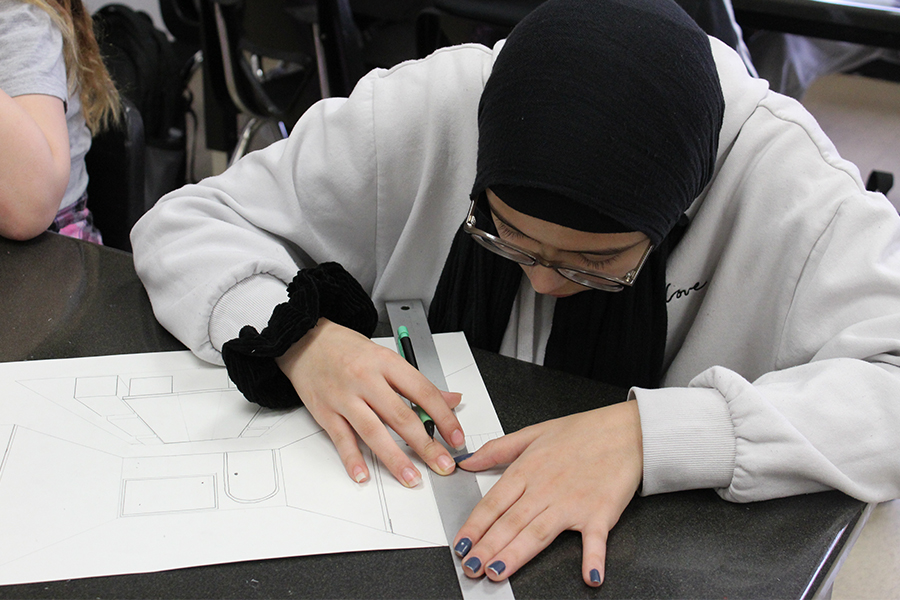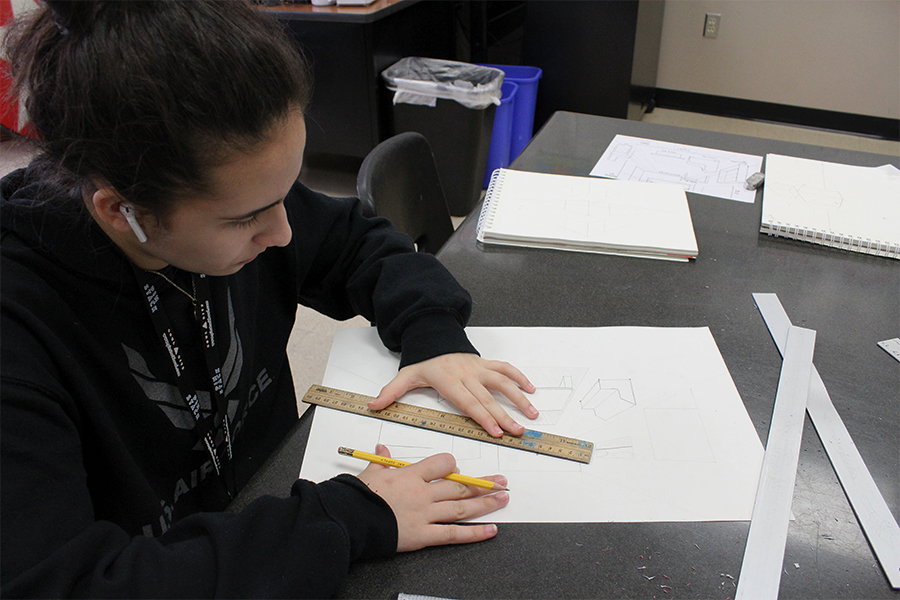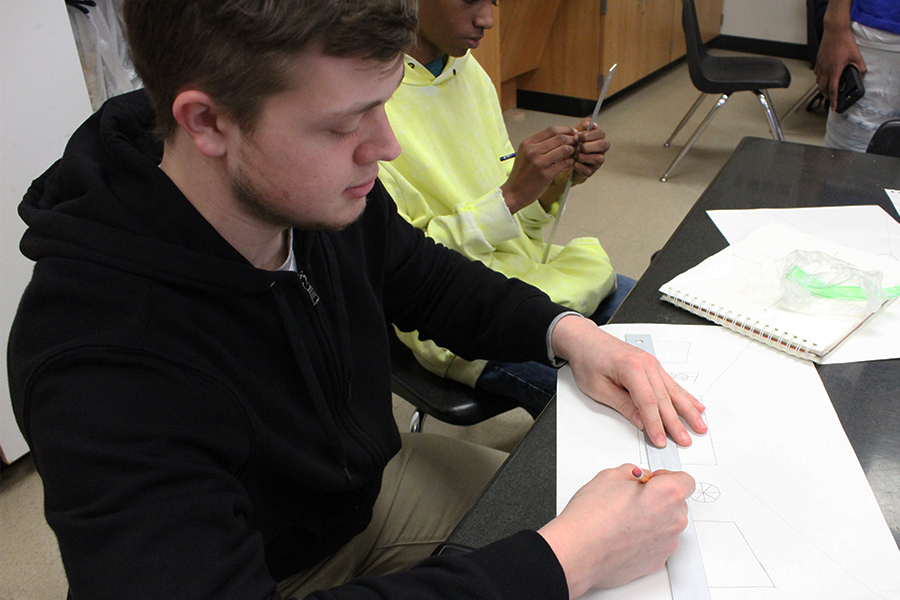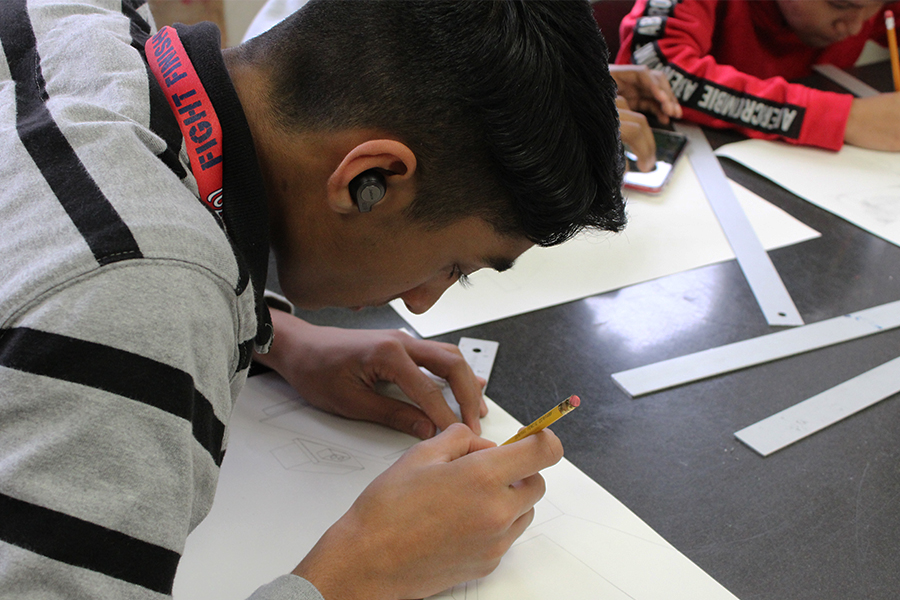Art students master perspectives with interior design drawing
January 13, 2020
Looking at something from a different angle, Art 1 students are being tasked with designing a room as they study one point [interior] perspective.
“I am having the Art 1 students create and design their own room [a media room, living room, bedroom, or kitchen] all while doing it in one point perspective,” Art 1 teacher Jeb Matulich said. “They will add the flooring, ceiling, all the furniture, all the fixtures, and the entire look and space of the room. The most important thing is that they learn how to do [one point perspective] correctly.”
One point perspective is a method that uses a “vanishing point” on the horizon line to show objects getting further and smaller. This assignment allows students to learn about the technique as well as explore their creativity.
“My favorite part of interior perspective is [how] it can be used to accurately show the interiors and [the] walls of a room,” freshman Akanksha Mehta said via text. “I love the creativity we were given with the assignment! We can design our room however we want. Interior perspective could be useful outside of class for designing rooms and depicting 3D spaces. My biggest take away from the assignment has been understanding how everything in the room leads to the vanishing point.”
There are many careers that use this technique such as interior designers, architects, video game designers, and engineers. For freshman Jessie Ingram, she is able to take the lessons beyond the classroom.
“I personally enjoy decorating and I believe that learning about interior perspective will help with my understanding of it,” Ingram said via text. “It will help me visualize a room in different, more realistic ways that will make it much easier to get the result I want. It gives me more motivation to work hard because I know what I’m doing in school will help me in the real world even if it doesn’t seem relevant at the moment.”
Students in Pre-AP Art 1 are also tackling perspective as they create a modern home in two-point perspective. Freshman Urooj Qureshi is excited to add more dimension to his work.
“Two point perspective is using lines and points to create a 3D space,” Qureshi said. “It shows the corner of a place, then extends into the distance on the paper. I’m looking forward to coloring it, and giving it more of a 3D feel.”




